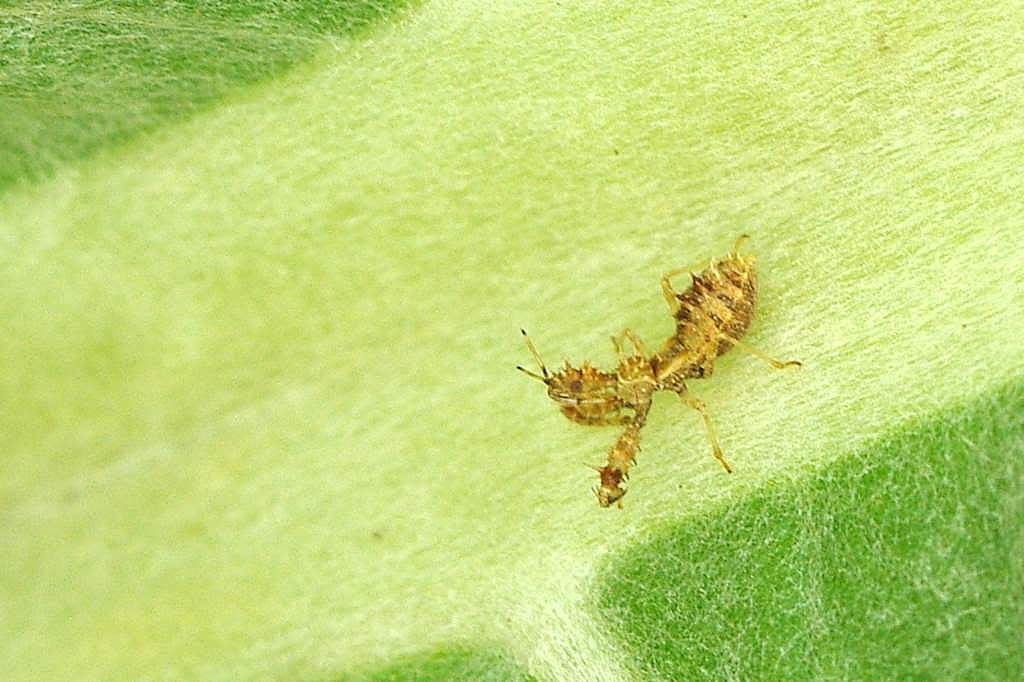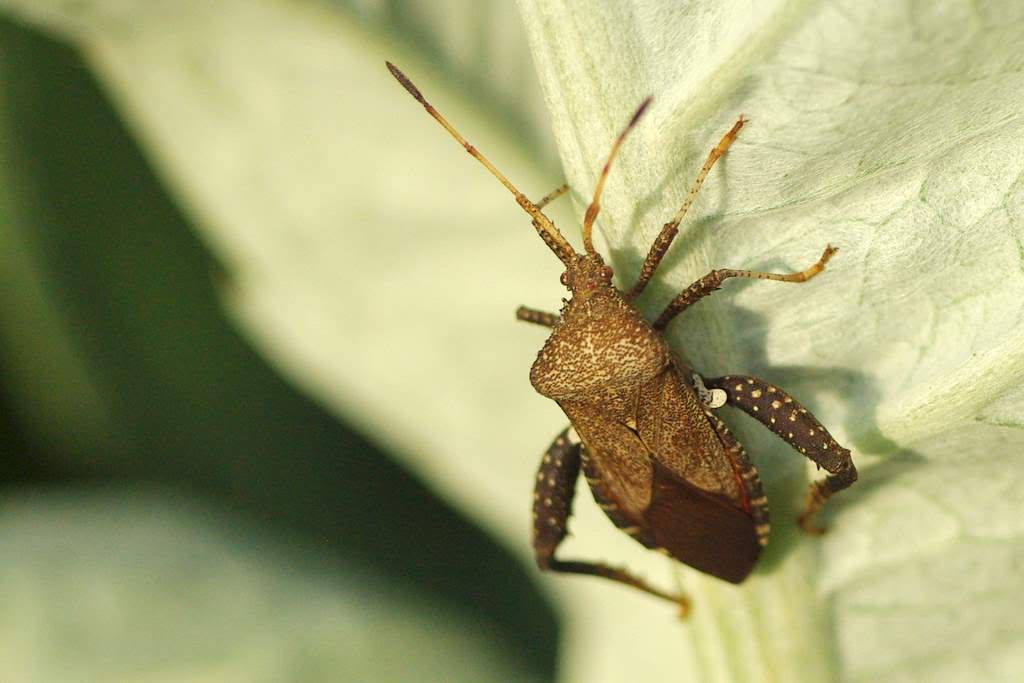The habitat that is cardoon
I've got a few cardoon plants in the ground this year, but only one of them is really thriving, showing me promise of the huge silvery leaves that I fell in love with the first time I grew this plant five years ago or so. One thing I've noticed about cardoon in my yard is they attract a nice variety of insects, all of them interesting, not all of them with the best intentions.
I found at least one interesting nymph (immature bug) a while back, and I think I just figured something interesting out. (The nature of this post just changed.)
I started out writing this post to show all of the different types of insects that are living on a single cardoon. I took photos of what I originally thought were six different species, but in researching them for identification on bugguide.net I found out I have captured images of fewer than I thought.
I'll leave that bit for later in the post, so first the obvious ones.
There are several red-headed bush crickets on this plant, but that can be said for my entire yard I think, as I see them everywhere:
These are my favorite crickets, because they're so interesting when compared to the normal black or brown crickets that live in my lawn. The bush crickets live above the ground on plants, and I've seen them on bamboo, shrubs, and perennials.
A red-banded leafhopper, small, but so colorful:
I wish I had more patience this morning and it wasn't so hot -- I'd try to get some ultra closeups, but that requires more equipment and work than this hot morning will allow.
The underside of the leaves is where a lot of the action is. There are several of these unidentified treehoppers:
The "horn" on top of its head tells me it's a treehopper, but the exact species is unknown -- there are a lot of different ones on bugguide.net and I couldn't narrow it down. The ants are constantly tending to these guys though, so they must be secreting something the ants like.
So those three (four if you count the ants) different types of bugs were easy to differentiate. Next we come to what I originally thought was three separate species, but finally realized that they were probably the same species at different stages of development.
If you've ever raised a caterpillar in a jar, you'll know that they will periodically shed their skins in able to grow larger. All insects do this, and they can significantly change their appearance as they go from nymph to adult.
So here's a look at what I believe is a single species, in age order from youngest to adult:
 |
| So tiny, doesn't have large antennae yet. |
 |
| Difficult to see these clearly as they stay under the leaves. |
 |
| The older, bigger one at the top right of the image... |
 |
| ...got chased by me to the top side of the leaf for a better look. |
 |
| Spikes are all gone. |
 |
| Notice there are still no wings, even though it looks almost fully-grown. |
 |
| I love the details on the back! (They were spikes in an earlier form.) |
 |
| The adult stage, with working wings. |
I may be wrong about it being a single species, but it seems to make sense to me. There are some visual clues too -- similar features between each stage.
So if you're wondering what this bug is, it's a helmeted squash bug. More than that, the last two photos show it to be a male -- the white "spurs" a the leg joints tell me that.
As I suspected, these guys are sucking the juices from the cardoon. Are they damaging the plant? I don't think so. Possibly. I'm not going to remove them, as I'm hoping the house wrens will take care of them eventually. I don't like to overreact when it comes to plant "pests".
Also, I love having them here as a ready subject to photograph.
So that's my look at the cardoon ecosystem. I started out with a long list of insects, and ended up with a much shorter list -- but learned something in the process.
.










I continue to be impressed with your knowledge of insects. I learn an amazing amount of stuff just by reading your blog.
Gerhard
:: Bamboo and More ::
Without bugguide.net I would be ignorant about most insects. Curiosity too, but good reference material is key.
These are all so different to bugs over here. the red banded leafhopper is positively psychedelic. Ours are brown!